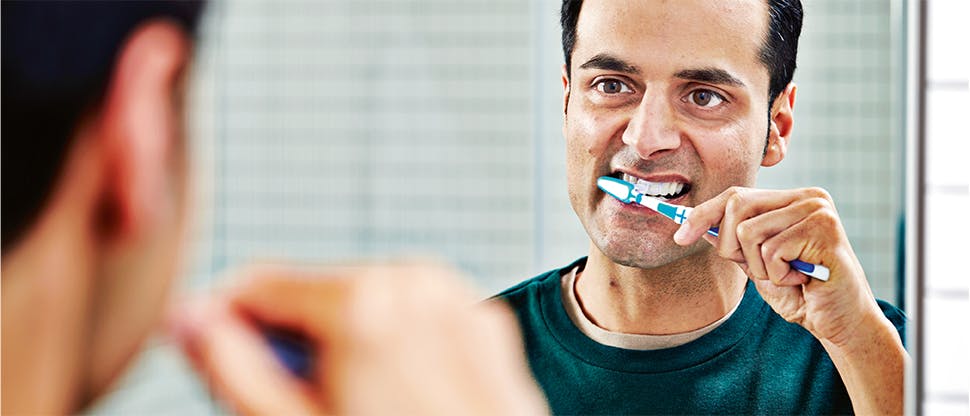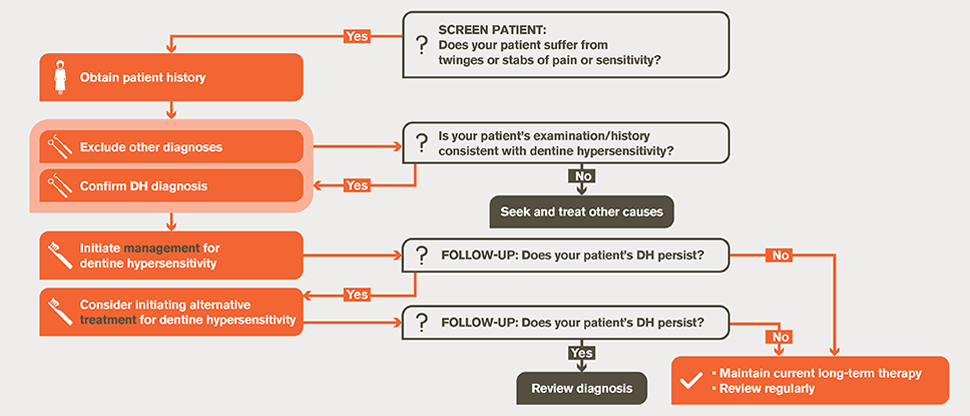Dentine Hypersensitivity: Management

Managing dentine hypersensitivity1
Here we discuss different approaches for managing dentine hypersensitivity.
Steps for managing dentine hypersensitivity1
DIAGNOSE
- Rule out other causes of pain (e.g. caries and inflammation)
- Observe patients’ reactions to cold air or cold water
- Ask patients about hypersensitivity symptoms (“short, sharp pain”)
EDUCATE
- Use a soft toothbrush
- Avoid aggressive toothbrushing
- Brush twice a day for 2 minutes with correct technique
- Regular appointments with dentist/dental hygienist
RECOMMEND
- Recommend a soft bristled toothbrush and to use a sensitivity toothpaste twice daily
- Recommend ongoing use of sensitivity toothpaste, due to nature of dentine hypersensitivity

Educating your patients
Patients should be educated on how to manage their dentine hypersensitivity through changes in lifestyle and daily oral hygiene habits. Recommendations could include:1
- Instructing the patient on how to remove risk factors (e.g. inappropriate toothbrushing technique)
- Removal of excessive dietary acids
Maintaining good oral hygiene is important for patients with dentine hypersensitivity.
Download a patient material on managing sensitivity with a suitable toothpaste.
Sensitivity toothpastes can have different mechanisms of action1,2

Recurring dentine hypersensitivity and patient follow-up
Guidelines for effective long-term management of dentine hypersensitivity recommend reassessing patients’ experience of pain at subsequent appointments. If they still experience dentine hypersensitivity pain they should be followed up and reviewed.1

Dentine hypersensitivity management: in summary1,2
Flowchart adapted from Canadian Advisory Board on Dentin Hypersensitivity, 2003.
Sensodyne – helping your patients manage dentine hypersensitivity
Causes and mechanisms
Find out about the causes and mechanisms behind dentine hypersensitivity.
Impact on patient quality of life
Find out about the impact dentine hypersensitivity has on patients’ daily lives.


